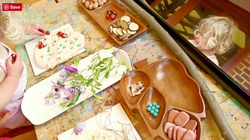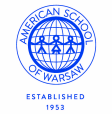ASW
|
 WHAT IS THE REGGIO EMILIA APPROACH? The Reggio Emilia Approach is an innovative and inspiring approach to early childhood education which values the child as strong, capable and resilient; rich with wonder and knowledge. Every child brings with them deep curiosity and potential and this innate curiosity drives their interest to understand their world and their place within it. Background: The Reggio Emilia Approach originated in the town (and surrounding areas) of Reggio Emilia in Italy out of a movement towards progressive and cooperative early childhood education. It is unique to Reggio Emilia. It is not a method. There are no international training colleges to train to be a Reggio Emilia teacher. Outside of the town of Reggio Emilia, all schools and preschools (and home schools) are Reggio-inspired, using an adaptation of the approach specific to the needs of their community. This is important, as each student, teacher, parent, community, and town are different. No two Reggio-inspired communities should look the same, as the needs and interests of the children within each community will be different. Typically the Reggio Approach is applied to preschools and early childhood settings but I think, with an understanding of the general principles, this inspiring child-led approach can be adapted to the home as well. Fundamental Principles: I have included links to posts which highlight these principles in more detail. If you are interested in implementing a Reggio-inspired approach in your own homes, check out our 30 Days to Transform Your Play series. Children are capable of constructing their own learningThey are driven by their interests to understand and know more. Children form an understanding of themselves and their place in the world through their interactions with others. There is a strong focus on social collaboration, working in groups, where each child is an equal participant, having their thoughts and questions valued. The adult is not the giver of knowledge. Children search out the knowledge through their own investigations. Children Are Communicators: Communication is a process, a way of discovering things, asking questions, using language as play. Playing with sounds and rhythm and rhyme; delighting in the process of communicating. Children are encouraged to use language to investigate and explore, to reflect on their experiences. They are listened to with respect, believing that their questions and observations are an opportunity to learn and search together. It is a process; a continual process. A collaborative process. Rather than the child asking a question and the adult offering the answers, the search is undertaken together. The Environment is the Third Teacher: The environment is recognised for its potential to inspire children. An environment filled with natural light, order and beauty. Open spaces free from clutter, where every material is considered for its purpose, every corner is ever-evolving to encourage children to delve deeper and deeper into their interests. The space encourages collaboration, communication and exploration. The space respects children as capable by providing them with authentic materials & tools. The space is cared for by the children and the adults. The Adult is a Mentor and Guide: Our role as adults is to observe (our) children, listen to their questions and their stories, find what interests them and then provide them with opportunities to explore these interests further. The Reggio Emilia Approach takes a child-led project approach. The projects aren’t planned in advanced, they emerge based on the child’s interests. An Emphasis on Documenting Children's Thoughts: You’ll notice in Reggio and Reggio-inspired settings that there is an emphasis on carefully displaying and documenting children’s thoughts and progression of thinking; making their thoughts visible in many different ways: photographs, transcripts of children’s thoughts and explanations, visual representations (drawings, sculptures etc.), all designed to show the child’s learning process. The Hundred Languages of Children is probably the most well-known aspect of the Reggio Emilia Approach. The belief that children use many many different ways to show their understanding and express their thoughts and creativity. A hundred different ways of thinking, of discovering, of learning. Through drawing and sculpting, through dance and movement, through painting and pretend play, through modelling and music, and that each one of these Hundred Languages must be valued and nurtured. These languages, or ways of learning, are all a part of the child. Learning and play are not separated. The Reggio Emilia Approach emphasises hands-on discovery learning that allows the child to use all their senses and all their languages to learn. If interested in learning more, please take a look at the author's blog by copying this link: http://www.aneverydaystory.com/beginners-guide-to-reggio-emilia/main-principles/
0 Comments
Leave a Reply. |
Proudly powered by Weebly


 RSS Feed
RSS Feed